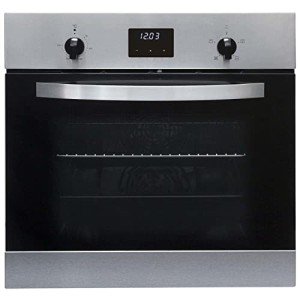Why Oven And Hob Isn't A Topic That People Are Interested In Oven And Hob
페이지 정보
본문

The Complete Guide to Ovens and Hobs: Choosing the Right Appliances for Your Kitchen
When it concerns creating cooking work of arts, the significance of quality kitchen devices can not be overstated. Ovens and hobs are the heart of any kitchen, enabling home cooks and expert chefs alike to produce, bake, and sauté delicious meals. Understanding the different kinds of ovens and hobs, along with their functions and functionalities, is vital for making informed buying decisions. This post uses an in-depth take a look at ovens and hobs, helping you navigate the choices available so that you can improve your kitchen's performance and versatility.
Comprehending Ovens
Ovens are vital for cooking and baking and can be found in numerous types to meet varied cooking requirements. Here is an overview of the most common kinds of ovens:
1. Standard Ovens
Standard ovens work by heating the air inside with gas or electric elements. They are best for baking cakes, roasting meats, and cooking casseroles.
2. Convection Ovens
These ovens utilize a fan to circulate hot air, providing an even temperature level throughout, which can substantially decrease cooking times. They are ideal for baking cookies or roasting veggies.
3. Microwave Ovens
Microwaves cook food quickly using electromagnetic radiation. They are best for reheating leftovers or thawing frozen foods however are not ideal for browning or crisping.
4. Wall Ovens
Incorporating a wall oven into your kitchen style can save area and produce a sleek aesthetic. They operate much like conventional or convection ovens however are built into the wall for simple access.
5. Variety Ovens
These ovens combine stovetop burners with an oven, supplying versatility for those who choose a single home appliance for all cooking requirements.
| Type | Cooking Method | best oven uk For |
|---|---|---|
| Traditional | Electric/Gas | Baking, roasting |
| Convection | Air blood circulation | Quick cooking, even baking |
| Microwave | Electromagnetic | Reheating, defrosting |
| Wall Ovens | Electric/Gas | Space-saving, sleek style |
| Range Ovens | Electric/Gas | Versatile cooking |
Exploring Hobs
Hobs, likewise called cooktops or stovetops, supply the surface area to prepare pans directly over a heat source. Like ovens, hobs can be found in numerous types, which can be categorized as follows:
1. Gas Hobs
These hobs use a flame for cooking and provide immediate heat control. They are favored by lots of chefs for hobs their responsiveness and accuracy.
2. Electric Hobs
Electric hobs use coils or flat surfaces to heat pans. They offer a constant heat source, but they might take longer to cool down compared to gas hobs.
3. Induction Hobs
Induction hobs utilize electro-magnetic energy to heat pots and pans straight, making them highly effective and quicker to cook. They are also much easier to clean up as the surface area stays reasonably cool.
4. Strong Plate Hobs
These are older innovation that utilizes strong metal plates to provide heat. They are resilient but are less effective than contemporary alternatives.
| Type | Heat Source | Advantages | Downsides |
|---|---|---|---|
| Gas Hobs | Flame | Instant heat control | Needs gas connection |
| Electric Hobs | Electric coils | Constant heat | Slower to cool down |
| Induction Hobs | Electromagnetic | Quick cooking, energy-efficient | Requires compatible pots and pans |
| Strong Plate Hobs | Strong metal plate | Sturdiness | Less efficient |
Choosing the Right Appliances
Picking the perfect oven and hob for your kitchen includes considering numerous elements:
1. Area and Layout
Step your kitchen location to figure out the size and placement of the oven and hob uk. Guarantee there is adequate ventilation, especially for gas appliances.
2. Cooking Style
Think about how typically you cook and the type of meals you prepare. A convection oven may match avid bakers, while somebody who regularly stir-fries might prefer an induction hob.
3. Energy Source
Select the energy source that best ovens and hobs fits your lifestyle. Gas uses instant control, while electric and induction hobs offer ease of usage and are frequently more energy-efficient.
4. Budget plan
Recognize your budget plan for kitchen home appliances. Ovens and hobs differ significantly in rate, depending on functions and brands. Prioritize essential features that meet your requirements.
5. Features
Try to find performances such as self-cleaning choices, smart technology compatibility, particular rack setups for ovens, and hobs security functions for hobs.
Regularly Asked Questions (FAQs)
Q1: What is the difference between a standard oven and a convection oven?A1: Conventional ovens warm the air inside without fans, while stove utilize a fan to flow hot air for more even cooking. Q2: Can I utilize aluminum pots and pans on induction hobs?A2: No, induction hobs need ferrous (magnetic )materials like cast iron or stainless steel to work effectively. Q3: Do gas hobs heat faster than electric hobs?A3: Yes, gas hobs provide instant heat, making them much faster for cooking compared to electric hobs. Q4: Is it safe to use a microwave oven hob?A4: Yes, when used according to the maker's instructions, microwave are considered safe for food preparation.

Q5: How frequently should I clean my oven and hob?A5: For optimal efficiency, clean your oven frequently, especially after spills. Hobs should be wiped down after each usage
to prevent accumulation. Ovens and hobs
are vital parts of a fully equipped kitchen. Comprehending the numerous types, their performances, and the factors to consider included in acquiring
them can significantly improve cooking experiences. Whether one is a casual home cook or a professional chef, investing time in choosing the best devices can lead to cooking success and complete satisfaction in the kitchen. By prioritizing features that line up with your cooking design, energy sources that fit your home, and spending plan considerations, you can develop an effective office that influences culinary imagination.

